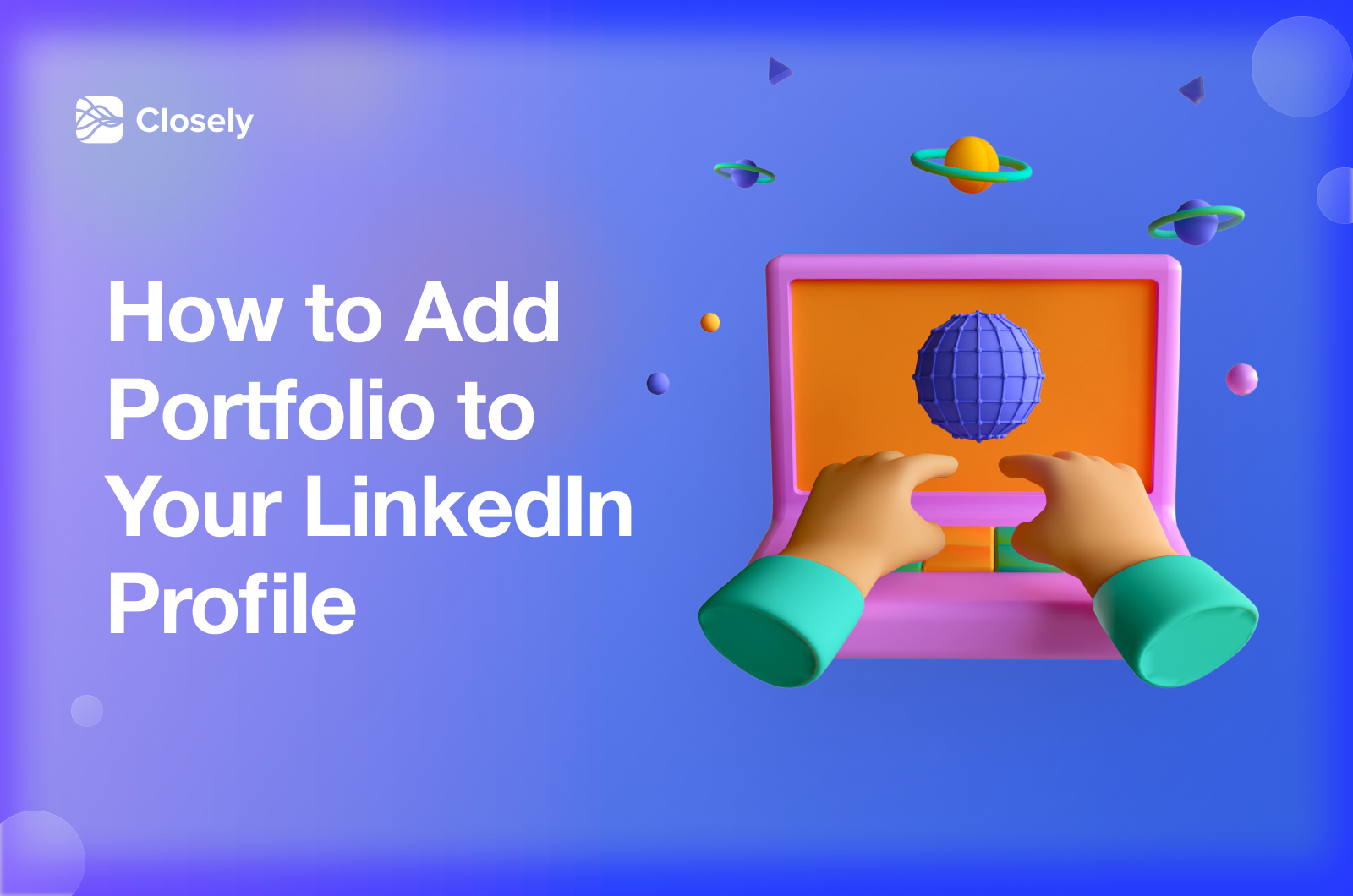LinkedIn is a powerful professional networking platform, and if you’re looking to showcase your skills and accomplishments, a LinkedIn Portfolio can be a game-changer. But what exactly is a LinkedIn Portfolio, and why should you add one to your profile?
In simple terms, a LinkedIn Portfolio is a feature that enables you to create and publish collections of your work, showcasing your skills, achievements, and experience. Think of it as a digital portfolio that’s accessible to a wide range of potential employers, clients, and collaborators. The idea behind a LinkedIn Portfolio is to provide a comprehensive view of what you bring to the table, and to help you stand out from the crowd.
Putting it simply, let people instantly see your works and experience by exposing skills, projects you worked on, your works and portfolio right on your LinkedIn page.
How to add a portfolio section to your LinkedIn profile
Go to your profile and click on “Add profile section”.
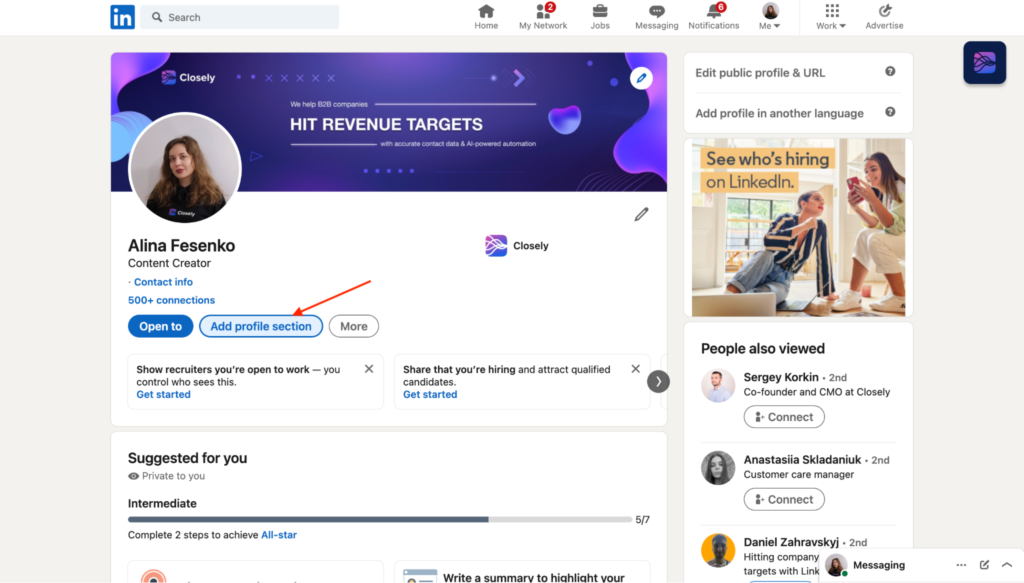
Choose “Additional”.
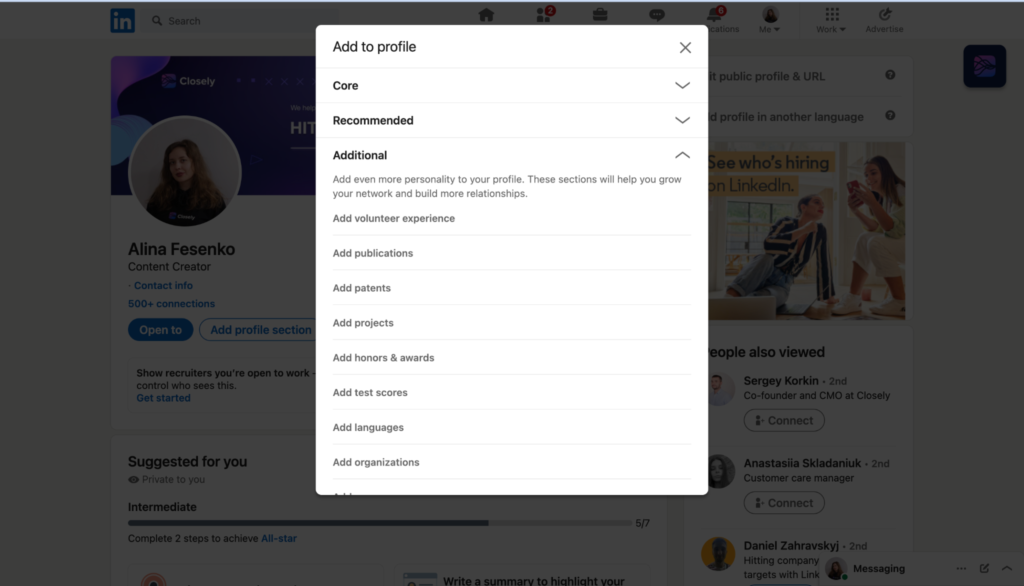
Here you can add:
- publications;
- patents;
- projects;
- honours & awards;
- test scores;
- languages;
- organizations.
If you go to the “recommended” section and click on “add featured”,
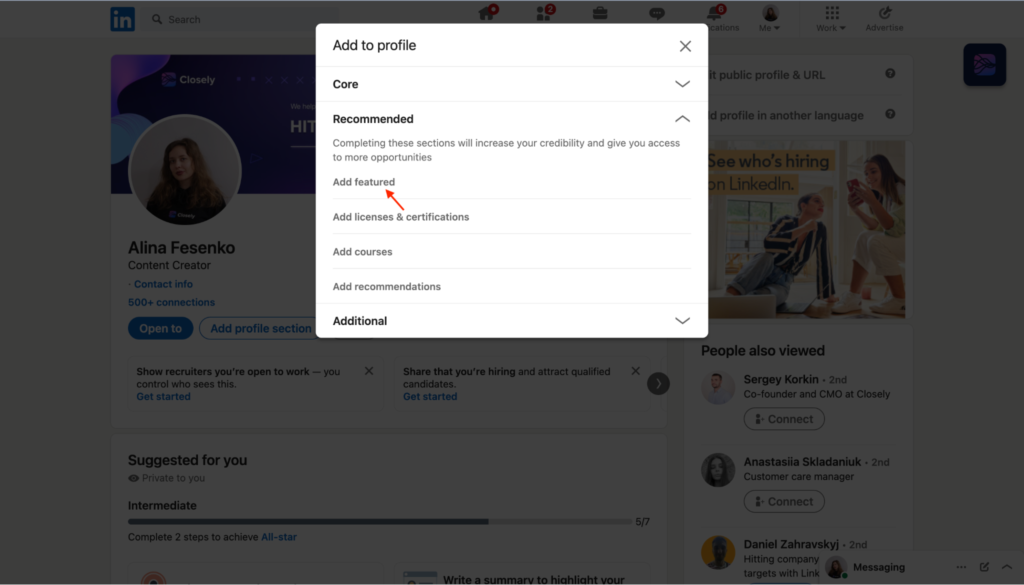
You’ll be redirected to a place where you can add media and links to publications.
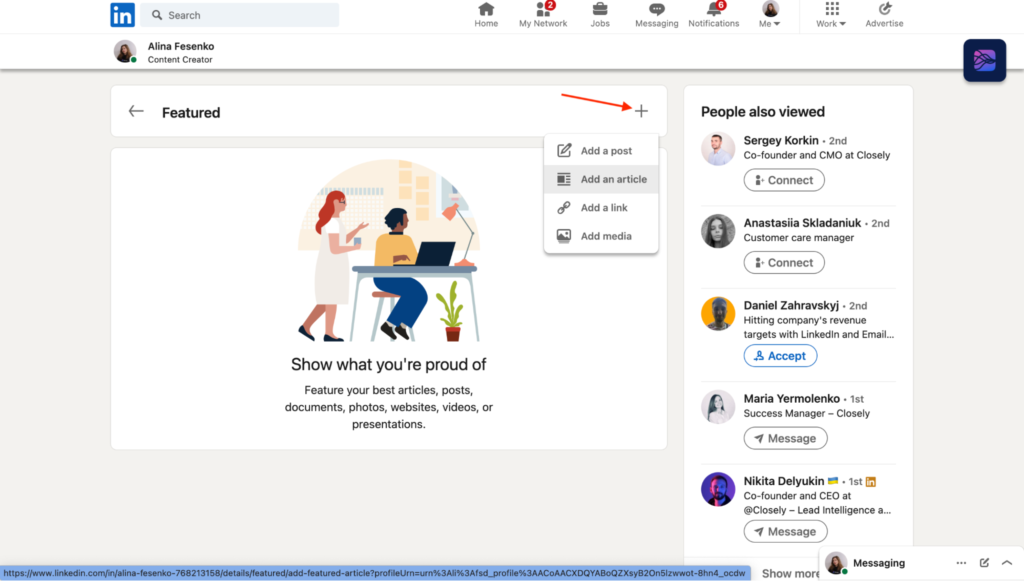
Simply click on the cross and the menu will be dropped.
By clicking on “Add media”, you can select the image from your computer and upload it to your portfolio.
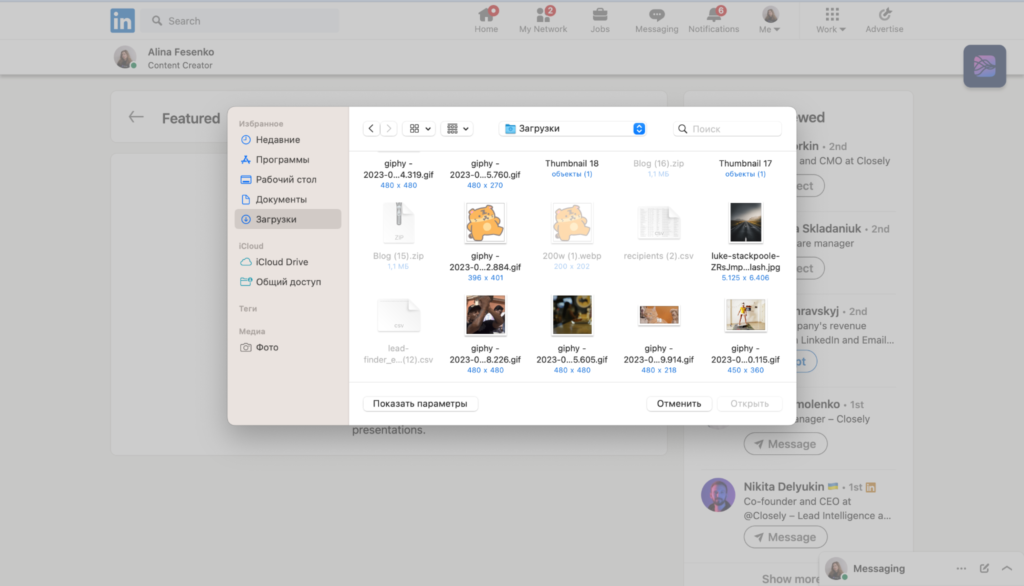
You can add links to PDF files with your portfolio or resume, or upload the file itself to LinkedIn.
The Benefits of Adding a LinkedIn Portfolio to Your Profile
There are many reasons why you should add a LinkedIn Portfolio to your profile, but here are a few of the most compelling:
- Boost your visibility
By adding a LinkedIn Portfolio to your profile, you increase your chances of appearing in search results. When someone searches for keywords related to your work, your portfolio can be one of the first things they see. The more engaging and visually appealing it is, the more chances of you popping in the top of search results. Watch how a portfolio gets you to the top of search results.
- Showcase your skills
A LinkedIn Portfolio allows you to showcase your skills in a visually appealing way. You can include images, videos, and other multimedia elements to help illustrate your abilities and achievements. People like to see things, instead of reading about how good you are, especially when it comes to the professions like designer or photographer.
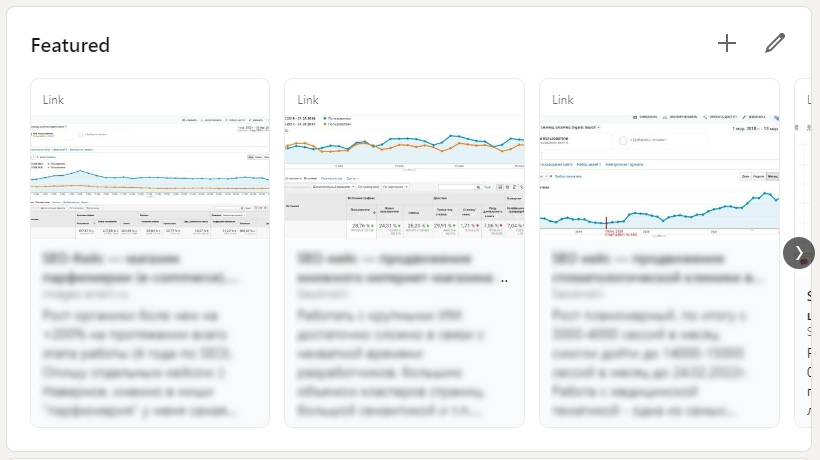
- Demonstrate your value
A LinkedIn Portfolio provides an opportunity to demonstrate the value you bring to the table. By highlighting your achievements and demonstrating the impact of your work, you can show prospective employers, clients, and collaborators that you’re the real deal.
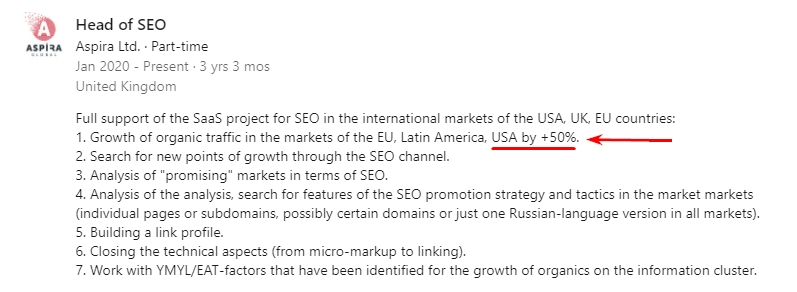
- Establish credibility
When you create a LinkedIn Portfolio, you establish yourself as a credible and trustworthy professional. By providing detailed information about your work, you can demonstrate your expertise and knowledge, which can help you stand out from the crowd.
- Show your creativity
A LinkedIn Portfolio provides an opportunity to showcase your creative side. Whether you’re a designer, writer, or developer, you can use a LinkedIn Portfolio to demonstrate your unique skills and talents.
- Build your network
By sharing your LinkedIn Portfolio with your network, you can connect with new people who are interested in your work. You can also use your portfolio to start a conversation and establish new professional relationships.
Maximizing Your LinkedIn Portfolio: What to Include
LinkedIn Portfolios are an excellent way to showcase your skills and accomplishments, but how can you make sure your portfolio is as effective as possible? In this article, we’ll take a closer look at what a LinkedIn Portfolio should include, and how to structure it for maximum results.
Further Reading: How to Automate LinkedIn Messaging — Ultimate Guide For 2023
First, let’s talk about what to include in your LinkedIn Portfolio. Here are some of the most important elements.
- A professional headshot
Your LinkedIn profile photo is your first impression, so make sure it’s a good one. A professional headshot can help you stand out from the crowd and give your portfolio a polished look.
- A clear, concise summary
Your summary is your opportunity to introduce yourself and explain what you bring to the table. Keep it short, sweet, and to the point, and focus on what sets you apart from the competition.
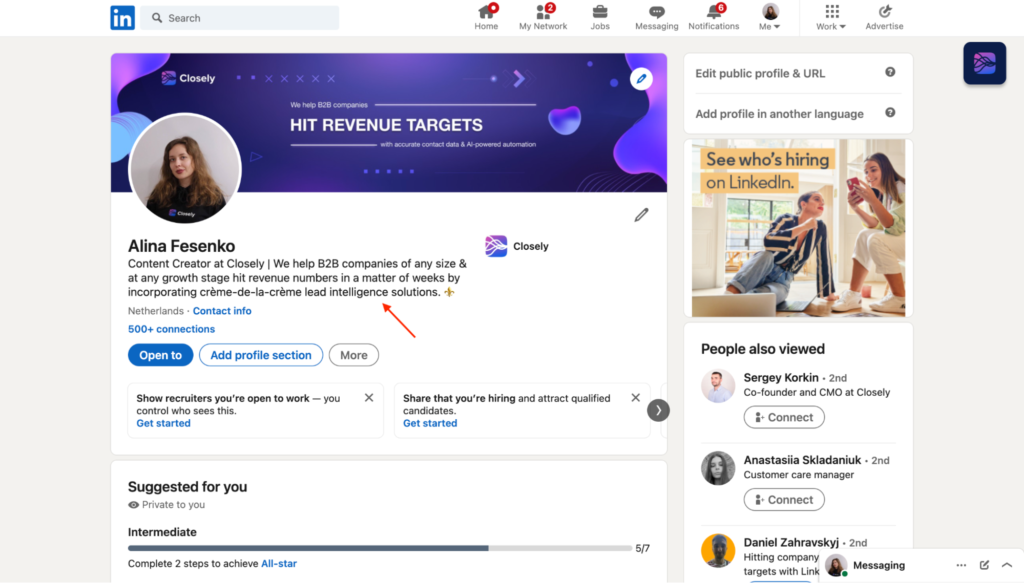
Further Reading: How To Improve Your LinkedIn Profile – 11 Ways You Can Do It
Usually, people want to instantly understand:
- What are your services;
- Who are they for;
- What sets you apart from competitors.
Put the answer to these three questions in 1 or 2 concise sentences.
- A list of your skills
LinkedIn allows you to add a list of skills to your profile, and these skills can be displayed in your portfolio. Be sure to include the skills that are most relevant to your work, and consider adding a few less-obvious skills that you excel at to help you stand out.
- Projects and accomplishments
This is the heart of your LinkedIn Portfolio, and it’s where you can really shine. Include projects and accomplishments that demonstrate your skills, highlight your achievements, and show the impact of your work. Use images, videos, and other multimedia elements to bring your projects to life.
- Recommendations
Recommendations from others can be a powerful way to demonstrate your expertise and credibility. Encourage your network to leave you recommendations, and consider adding a few of the most glowing recommendations to your portfolio.
Or simply ask your friend to leave a line.

How to Structure a LinkedIn Portfolio for Success
Now that you know what to include in your LinkedIn Portfolio, let’s talk about how to structure it for maximum results. Here are a few tips to keep in mind:
- Keep it simple
Your portfolio should be easy to navigate, and the information should be easy to find. Avoid clutter, and make sure your portfolio is clean, crisp, and professional.
- Make it visually appealing
Use images, videos, and other multimedia elements to bring your portfolio to life. A visually appealing portfolio is more likely to capture the attention of potential employers, clients, and collaborators.
- Highlight your achievements
Make sure your achievements are front and center, and focus on what sets you apart from the competition. Don’t be afraid to brag a little bit — this is your chance to shine!
- Tell a story
Your portfolio should tell a story about who you are and what you bring to the table. Make sure each element of your portfolio is connected, and that the information flows together in a logical, easy-to-follow manner.
How to Spice Up Your LinkedIn Portfolio and Stand Out from the Crowd
Are you tired of blending in with the millions of other professionals on LinkedIn? If you’re looking for a way to make your portfolio truly stand out, you’re in luck! In this section of the article, we’ll explore some unique tips and strategies that will help you spice up your LinkedIn portfolio and set yourself apart from the rest.
- Show, don’t tell
Instead of simply listing your skills and accomplishments, use multimedia elements to bring your portfolio to life. Add images, videos, and even audio clips to demonstrate your skills and showcase your work. This will make your portfolio more engaging and help you stand out from the crowd.
- Get creative with your projects
Instead of simply listing your projects and accomplishments, try to tell a story about each one. Explain what you did, how you did it, and what you learned. Use images, videos, and other multimedia elements to bring your projects to life, and focus on what sets each project apart from the rest.
- Don’t be afraid to have a personality
LinkedIn can be a stuffy platform, but that doesn’t mean you have to be too. Show your personality, and let your unique voice come through in your portfolio. This will help you connect with your audience on a personal level, and help you stand out from the crowd.
- Highlight your achievements
Make sure your achievements are front and center, and don’t be afraid to brag a little bit! Focus on what sets you apart from the competition, and use multimedia elements to bring your achievements to life.
- Create a portfolio that’s easy to navigate
Your portfolio should be easy to navigate, and the information should be easy to find. Avoid clutter, and make sure your portfolio is clean, crisp, and professional.
By using these unique tips and strategies, you can spice up your LinkedIn portfolio and set yourself apart from the rest. So why wait? Get started today, and see the results for yourself!
You may also be keen on finding what works best for impressing your potential employer. Once you have your portfolio ready, you can start thinking about reaching out to recruiters. Grab some hot tips on reaching out to a recruiter on LinkedIn. What should you say after connecting + message templates.
Using portfolios to hook in different target audiences
The ability to customize portfolios for different audiences opens up a world of possibilities. For example, you can create different portfolios for different industries, clients, or job roles. This can help you tailor your portfolio to the specific needs and interests of your target audience, and increase your chances of making a good impression.
So, how do you make the most of this benefit?
When it comes to using portfolios on LinkedIn, one size definitely does not fit all. While your portfolio may showcase your incredible talents, it’s important to consider the specific audience you’re targeting, and tailor your content accordingly. Here’s how to customize your portfolio for different audiences, without sacrificing any of your awesomeness:
- Research your audience.
Before you start customizing your portfolio, take some time to research your audience. Who are they? What are their interests? What are their “pain points“? Contemplating questions like these will give you a better idea of what content to include in your portfolio, and how to present it in a way that resonates with them.
- Highlight relevant experience.
When customizing your portfolio for a specific audience, be sure to highlight relevant experience. If you’re targeting a particular industry or job role, showcase your past work that aligns with that industry or role. For example, if you’re a graphic designer targeting the fashion industry, include examples of your work for fashion clients or brands.
- Use appropriate language.
To connect with your target audience, use language that speaks to them. If you’re targeting a more casual audience, you might use more relaxed language, and avoid industry jargon. On the other hand, if you’re targeting a more formal audience, it may be better to use more professional language and terminology.
- Let your personality draw them in.
Don’t be afraid to show your personality in your portfolio. You can leverage your unique experiences and characteristics in a way that’s appropriate for your target audience, making it more likely for them to find you relatable and your content enjoyable.
- Tailor the visuals.
Finally, when customizing your portfolio for a specific audience, don‘t forget the visuals! Different audiences may have different preferences when it comes to visual content. If you’re targeting a more professional audience, you might want to use more muted colors and more sophisticated imagery, whereas visuals for a younger or less “serious“ demographic may include brighter colors and be generally more attention-grabbing.
Further Reading: How To Easily Remove Connections On LinkedIn?
If you employ these strategies in crafting your portfolios, you gain the opportunity to showcase your skills and expertise in a way that resonates with potential clients, collaborators, or employers. So, don’t be afraid to mix it up, have some fun, and make a strong impression on your target audience!
Frequently Asked Questions
1. Where do I add my portfolio on LinkedIn?
There’s no dedicated box for portfolios on LinkedIn. Use the hashtag to add your link and get access to thousands of potential employers, investors, buyers, and partners.
2. Can LinkedIn be considered a portfolio?
It will give you a head start when the recruiter is reviewing your profile. Yes, you can also mention your interests, awards, honors, professional associations, volunteer experience, and education details.
3. How do I add CV and portfolio to LinkedIn?
To add a link to your resume on your LinkedIn: Go to your LinkedIn profile. Click Add Section. Select Media under Featured. Click Upload File. Browse for and select your resume file. Click Apply and Save.
4. How do you add a PDF portfolio to LinkedIn?
The PDF portfolio will appear as a link under your profile picture. LinkedIn also allows you to share PDF portfolios with your connections.
